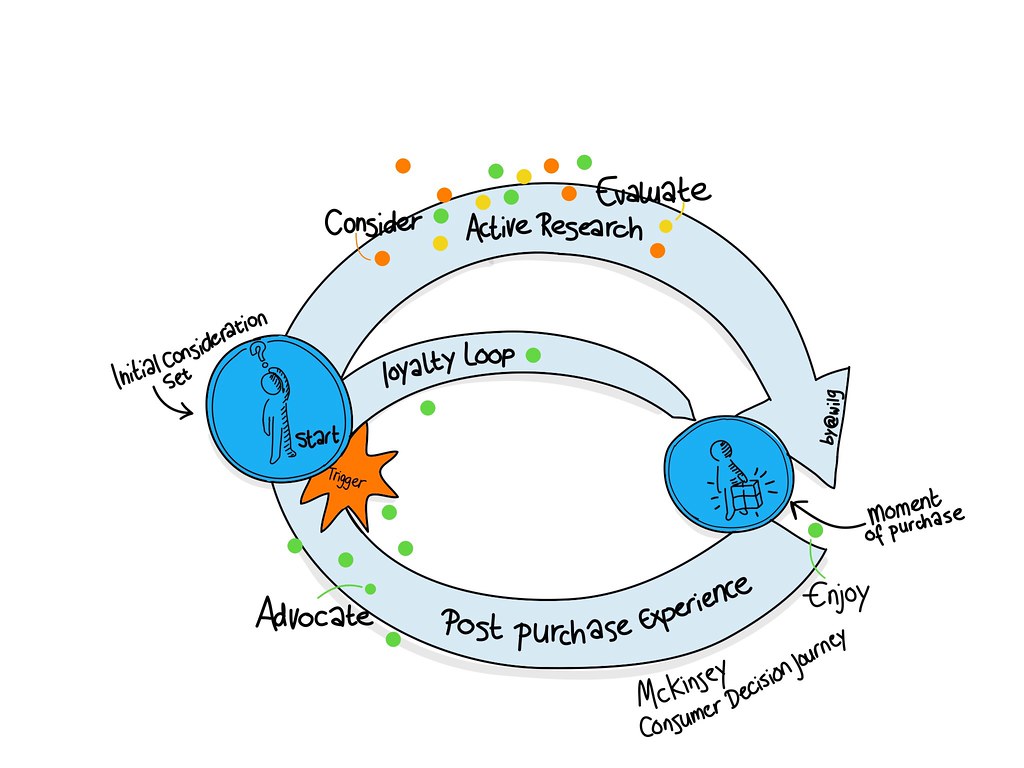The customer journey is the path that a customer takes from initial awareness of a product or service to final purchase and beyond. Along the way, the customer will go through several stages, each with its own set of touchpoints with the brand. The customer journey can be long and complex, or it can be short and simple. But regardless of the length or complexity, businesses need to understand the journey in order to map out the best way to reach and engage their customers.
What is customer journey mapping?
A CJ map is a visualization of the steps a customer takes to complete a task or goal, usually over the course of multiple interactions with a company. It’s a way to see the “big picture” of the customer experience, and identify areas for improvement.
It can be a simple sketch showing the main steps in a task or goal, or a more complex visualization with detailed information about each step. It’s often used in conjunction with other customer experience tools, such as customer personas and experience maps.
The benefit of mapping your customer journey
Mapping your customers’ journey can help you to better understand your customers and their needs. It can also help you to identify areas where you can improve your customer service. Additionally, it can help you to develop more targeted marketing campaigns, and to improve your overall customer experience.
What does a customer journey map contain?
A CJ map is a document that outlines the steps a customer takes when interacting with a company, from initial awareness to purchase and beyond. It is a valuable tool for businesses to understand the customer experience and identify areas for improvement.
A typical CJ map will contain the following information:
-The customer’s goal or need
-The steps the customer takes to reach their goal
-The channels or touchpoints the customer uses
-The emotions the customer feels at each stage
-The barriers or pain points the customer experiences
These can be created for a specific product, service, or even a specific touchpoint within the customer experience. They can be simple or complex, depending on the level of detail desired.
How to create a customer journey map?
Creating a CJ map can help you to identify pain points and areas for improvement in the customer experience, as well as understand how your customers perceive your brand.
There are a few key steps to creating it:
- Define your customer segments. Who are your target customers? What needs do they have that your business can address?
- Identify the key touchpoints in the customer experience. These are the interactions that your customers have with your business, whether it’s online, in-store, or over the phone.
- Plot out the journey. Once you know who your customers are and what touchpoints they’ll experience, you can start to map out their journey from start to finish.
- Analyze and optimize. Once you have your customer journey map, you can start to look for areas where the experience can be improved. Are there any pain points that can be addressed? Are there any opportunities to create a more seamless experience?
Customer journey mapping best practices
First and foremost, it’s important to get input from as many stakeholders as possible. This includes customers, employees, and anyone else who has a vested interest in the customer experience. Secondly, you should take a holistic view of the customer journey, looking at every touchpoint and interaction. This will help you identify any potential pain points and areas for improvement. Finally, don’t forget to keep your journey map up to date as the customer experience evolves over time.
Conclusion
In conclusion, customer journey mapping is a valuable tool for businesses who want to improve the customer experience. By mapping out their customers’ journey, businesses can identify pain points and areas for improvement.

